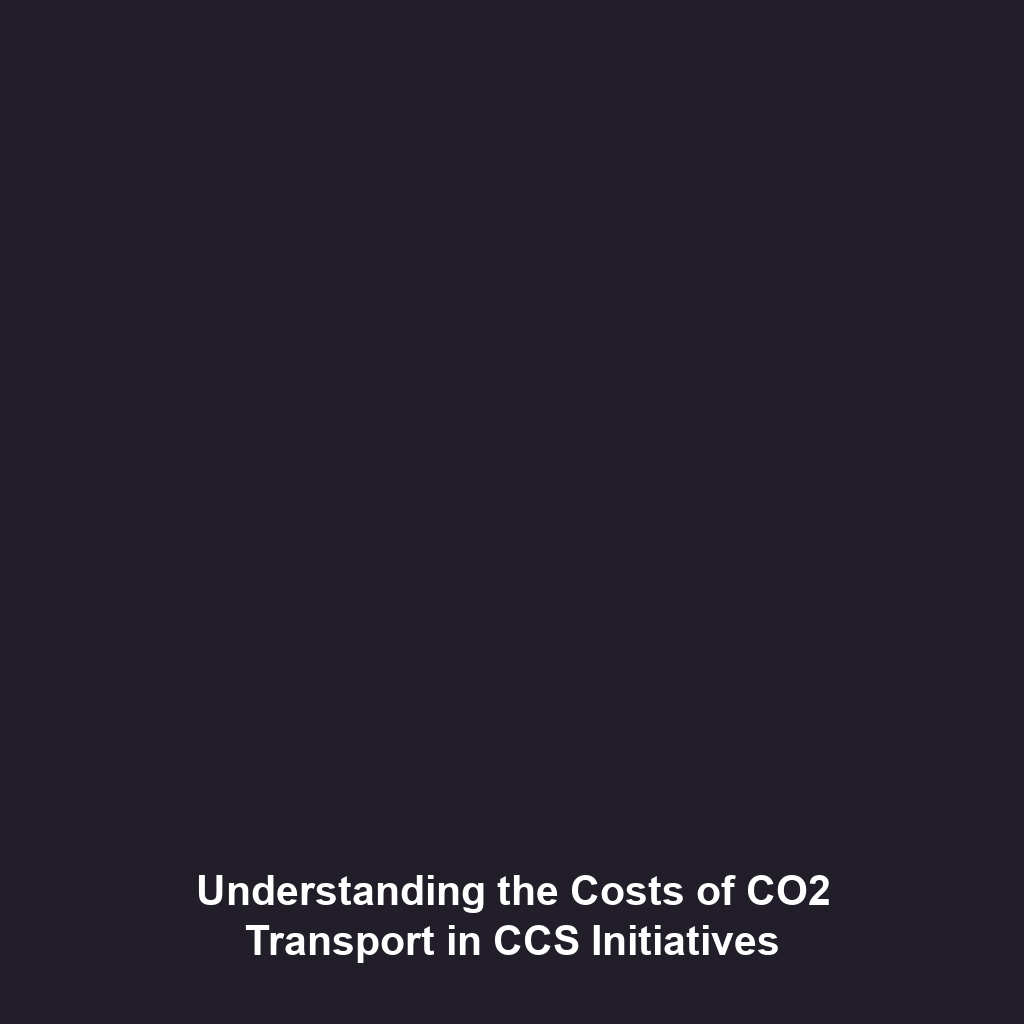The Energy and Infrastructure Required for Compression in Long-Distance CO2 Transport
Introduction
The energy and infrastructure required for compression are critical components in the journey of carbon dioxide (CO2) from capture sources to storage sites. Understanding the significance of these factors is essential for the effectiveness of Carbon Capture & Storage (CCS), a pivotal technology in combating climate change. With increasing focus on reducing greenhouse emissions, compressing CO2 for long-distance transport becomes necessary, leading to higher costs. This article delves into the intricacies of compression energy requirements and infrastructure as significant aspects of the CCS framework.
Key Concepts
Understanding CO2 Compression
Compression of CO2 involves the use of energy-intensive processes to reduce its volume for transportation. The major concepts surrounding this topic include:
- Thermodynamic Principles: CO2 must be compressed to high pressures, often exceeding 1000 psi, to ensure efficient transport.
- Energy Consumption: The energy required for compression affects the overall economic feasibility of CCS projects.
- Infrastructure Needs: Specialized pipelines, compressors, and pumping stations must be developed and maintained to facilitate transport.
Applications and Real-World Uses
There are numerous applications of the energy and infrastructure required for compression in Carbon Capture & Storage (CCS), including:
- Industrial Facilities: Factories capturing CO2 emissions utilize compression methods to transport CO2 to storage sites.
- Power Generation: Power plants are increasingly integrating CCS technologies where CO2 is compressed and injected into geological formations.
- Enhanced Oil Recovery: Compressor systems are used to transport CO2 for enhanced oil recovery, increasing oil output while securely storing emissions.
Current Challenges
While compression is vital for CO2 transport, several challenges exist:
- High Operational Costs: The energy demands for compression can escalate project costs significantly.
- Infrastructure Investment: Building a network of pipelines and compression facilities requires substantial investment and planning.
- Regulatory Hurdles: The transportation of compressed CO2 faces complex regulatory environments that can impede progress.
Future Research and Innovations
Upcoming innovations related to the energy and infrastructure required for compression in Carbon Capture & Storage (CCS) focus on:
- Efficiency Improvements: Research is ongoing into more energy-efficient compression technologies.
- Advanced Materials: New materials aim to create more durable, cost-effective pipelines and compressors.
- Decarbonization Strategies: Investigating alternative energy sources to power compression systems sustainably.
Conclusion
Understanding the energy and infrastructure required for compression is crucial for advancing Carbon Capture & Storage (CCS) technologies. As we strive to mitigate climate change, addressing the associated challenges will be vital for refining CCS methodologies. Stakeholders are encouraged to invest in research and development to enhance the efficiency and reduce costs related to CO2 transport. For further insight into CCS technologies, consider exploring our related articles: The Future of Carbon Capture Technologies and Innovative Storage Solutions for CO2.

Leave a Reply